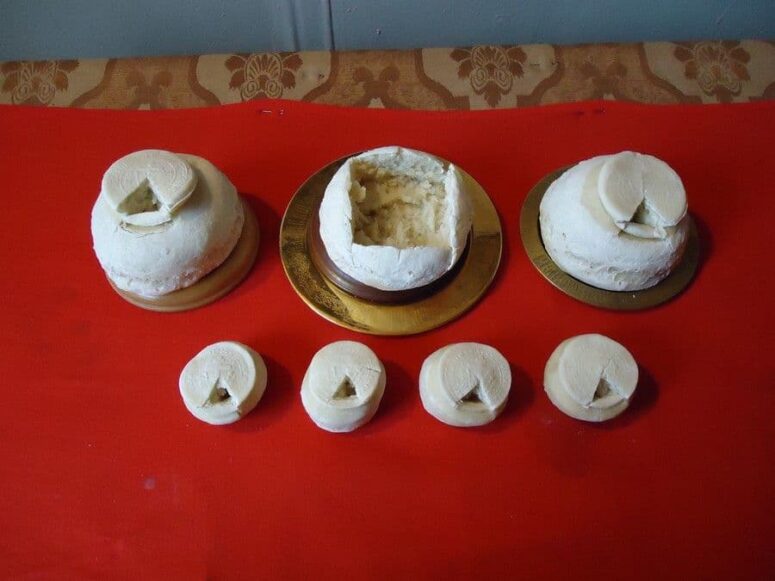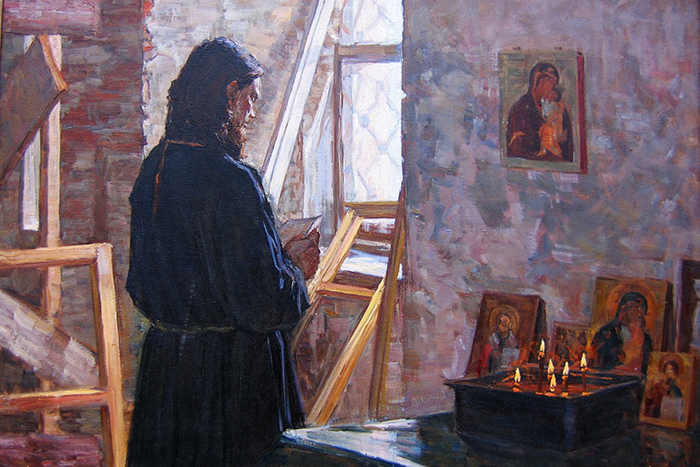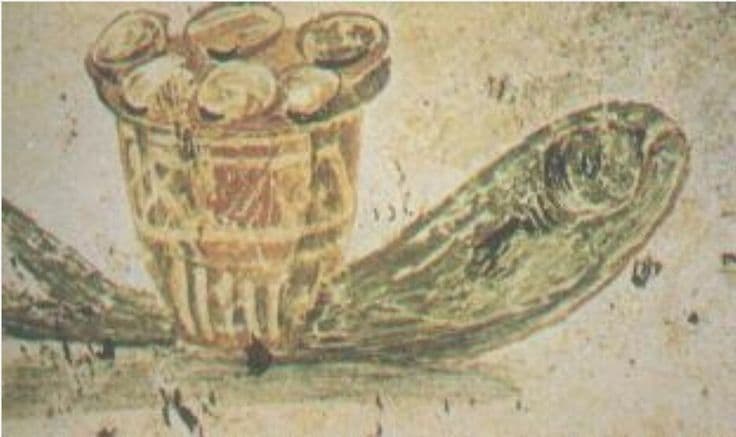
The number of prosphora used in celebrating the Eucharist is different in the liturgical practices of different churches. Where has this tradition come from and how can such a discrepancy in the most important of all church Sacraments be explained? Let us try to find some answers in this article.
The Greek Tradition
The history and development of the proskomedia rite is sometimes very confusing. Everything was much simpler in the ancient church, where the faithful would bake bread at home or buy it in the market, and then bring it to their community and give it to the deacons. The deacons examined the gifts and marked the best loaves by making small cross-shaped incisions on them (replaced by the 6th century with custom seals). The rest of the bread was served during the agape, a common “feast of love” (Prof. Ivan D. Mansvetov). Because the communities were few in their numbers, the Liturgy was celebrated on one Eucharistic Bread – the Lamb – as evidenced by St Paul, “Because there is one loaf, we, who are many, are one body, for we all share the one loaf.” (1 Cor. 10:17)

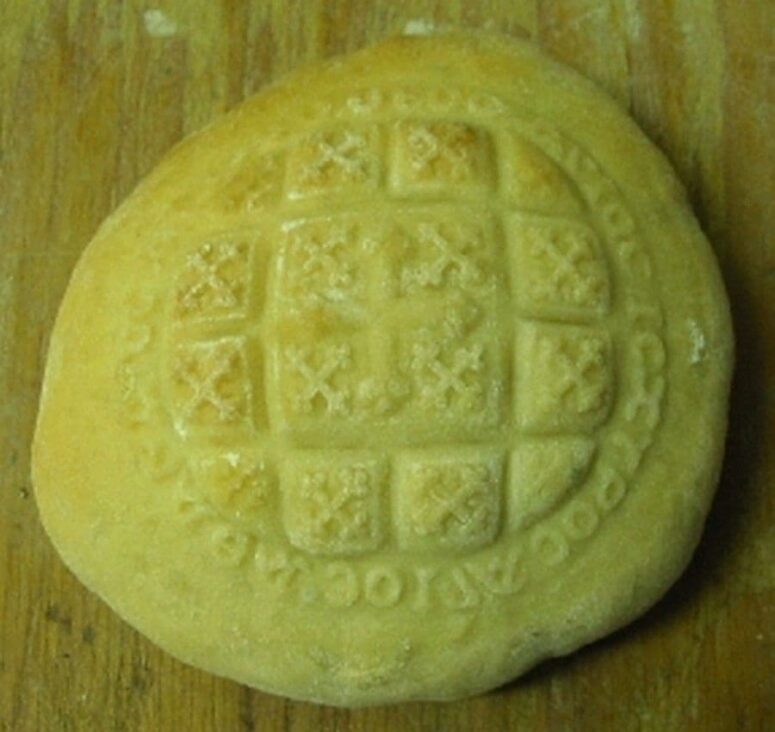
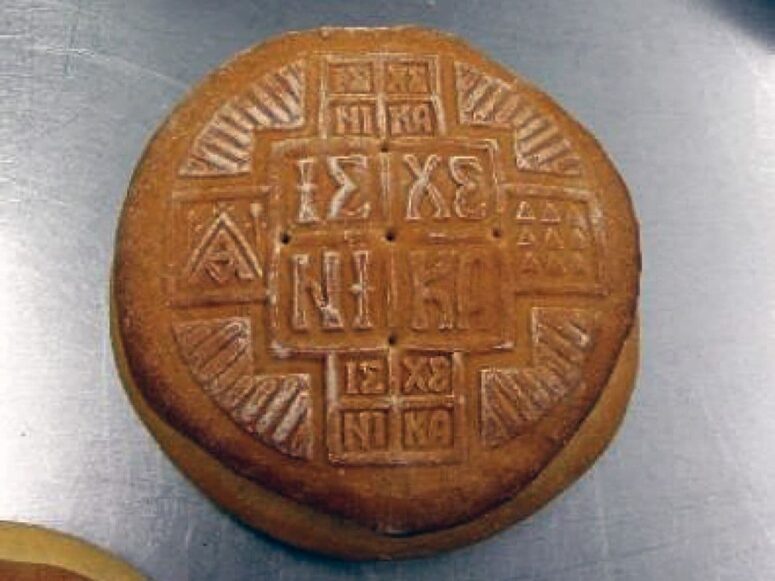
When did all the other prosphora used at the Liturgy appear? The emergence of the additional loaves at the liturgy is related to the ancient tradition where the Christians, coming to the church community, contributed bread, wine, oil, beeswax or incense. Deacons mentioned all the faithful church members in their prayers and accepted their offerings. Over time, as veneration of saints became more and more common, Christians began to bring prosphora in “honor and memory” of the celebrated saint. Such prosphora were placed on the altar next to the sacramental bread. When the quantity of such prosphora became too high, the practice appeared to take out particles from them and place them on the diskos next to the Lamb. The number of prosphora used during the service varied from one to seven or more (Archpriest Alexander Petrovsky).
In the modern Greek practice, one prosphoron, called the Lamb, is used at the service. The large seal is placed on it, indicating “sections” for the removal of the Lamb, as well as the particles in honor of the Holy Virgin, the nine titles of saints, the living and departed children of the Church. Everything that remains from such prosphora is called antidoron bread and is distributed after Communion. Such a practice, although widespread, is not ubiquitous, and simple Panagia prosphora are often seen in Greek churches, especially if the rite of Panagia is performed.
The Russian Tradition
The contemporary Russian practice is essentially no different from the Greek tradition. The first significant difference is that in the Russian Church five prosphora are used at the Liturgy. The second important difference is rather a theological one, i. e. the abandoning of the commemoration of the Angels during proskomedia, as they are not in need of Christ’s Atonement. Also, in Russia separate particles are removed from prosphora, while Greek priests have a more widespread custom of “chiselling out” smaller fractions, which significantly frees the diskos from a large number of particles.
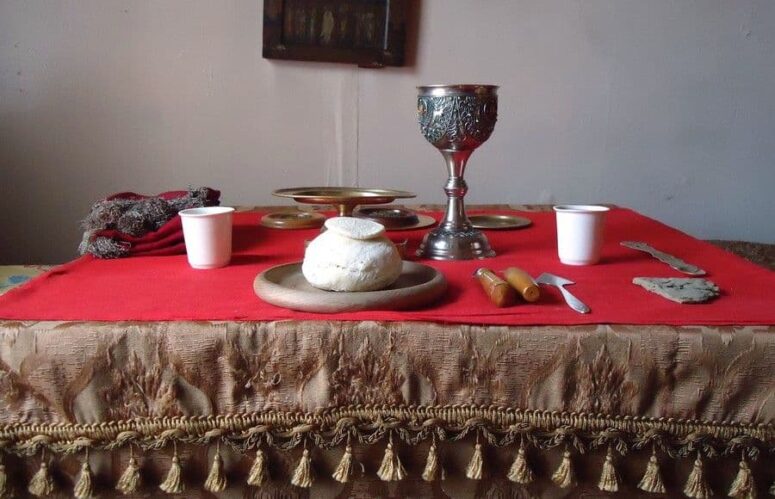

Old Believer Practice
The Old Believers maintain their unique tradition and use seven prosphora. Each of them must be imprinted with a round seal representing an eight-pointed cross. No other images are allowed. According to the Stoglavy Synod of 1551, a particle of a relatively larger size must be removed from the Mother of God prosphoron. The particles are strictly triangular (in honor of the Holy Trinity). Only one particle is taken out of each prosphora, because the removal of a particle is called “the immolation of the prosphora,” and cannot be repeated. The particles are removed at the place of the seal where the skull of Adam is depicted, thereby symbolizing that the sin of Adam and his descendants is washed away by the Blood of Christ (when the particles are immersed in the Chalice at the end of the Liturgy).
The prosphoron of the Nine Ranks is called the Forerunner’s. The Old Believers also commemorate the Angelic powers at the proskomedia, but only one particle (not nine) is taken out and placed on the left side of the Lamb, thereby forming the Deesis.
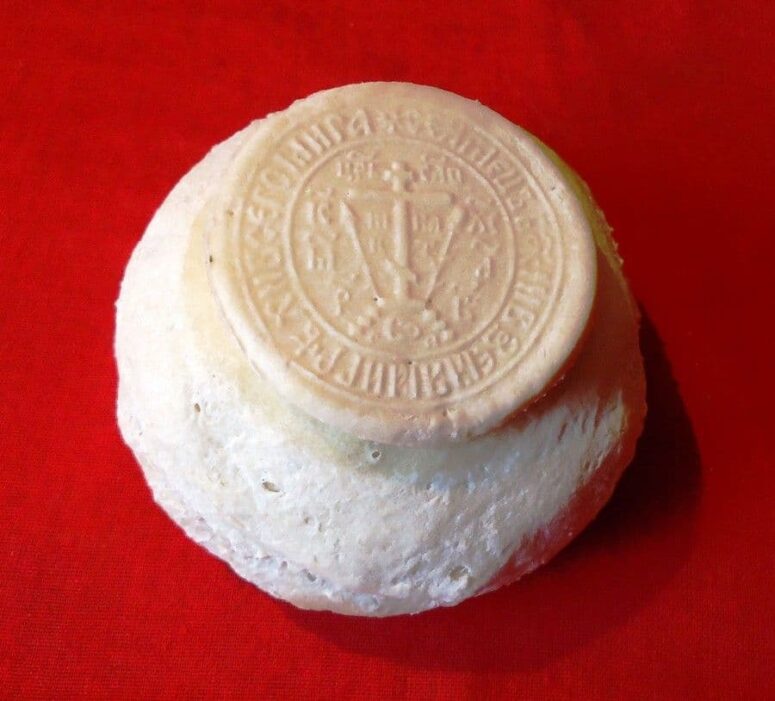
The 4th prosphora used to be taken out to commemorate the Orthodox tsars and the army, but with the fall of the Russian monarchy, the particle is taken out of this prosphora “for all Orthodox Christians guarding the Russian land (i.e., the rulers), as well as the warriors and all Orthodox Christians”. The 5th prosphoron serves to commemorate the Primate of the Russian Church, the ruling bishop and the entire priestly order. From the 6th, particles are taken out for the hegumen/rector, spiritual father, celebrating priest and the entire clergy. After the particle is taken out of the 6th prosphoron, the priest says, “Let us pray to the Lord, Lord have mercy.” thus commencing the commemoration of all Christians, using brought-in prosphora. Notably, the priest says nothing during this commemoration. It is believed that prayer begins on the sixth prosphoron and goes on until the priest, commemorating himself, says “Amen” and thus ends the “prayer of the 6th prosphoron”. The 7th prosphoron serves to commemorate the departed. The particle is incised, but not removed until all the deceased are commemorated.
As we see, there are quite a few liturgical differences, even within the main Sacrament of the church. We should hardly be confounded by this, however. Rather on the contrary, let us appreciate the love and creativity that the church shows in relation to the Holy of Holies, preserving at the same time the sacrosanctity of faith.
